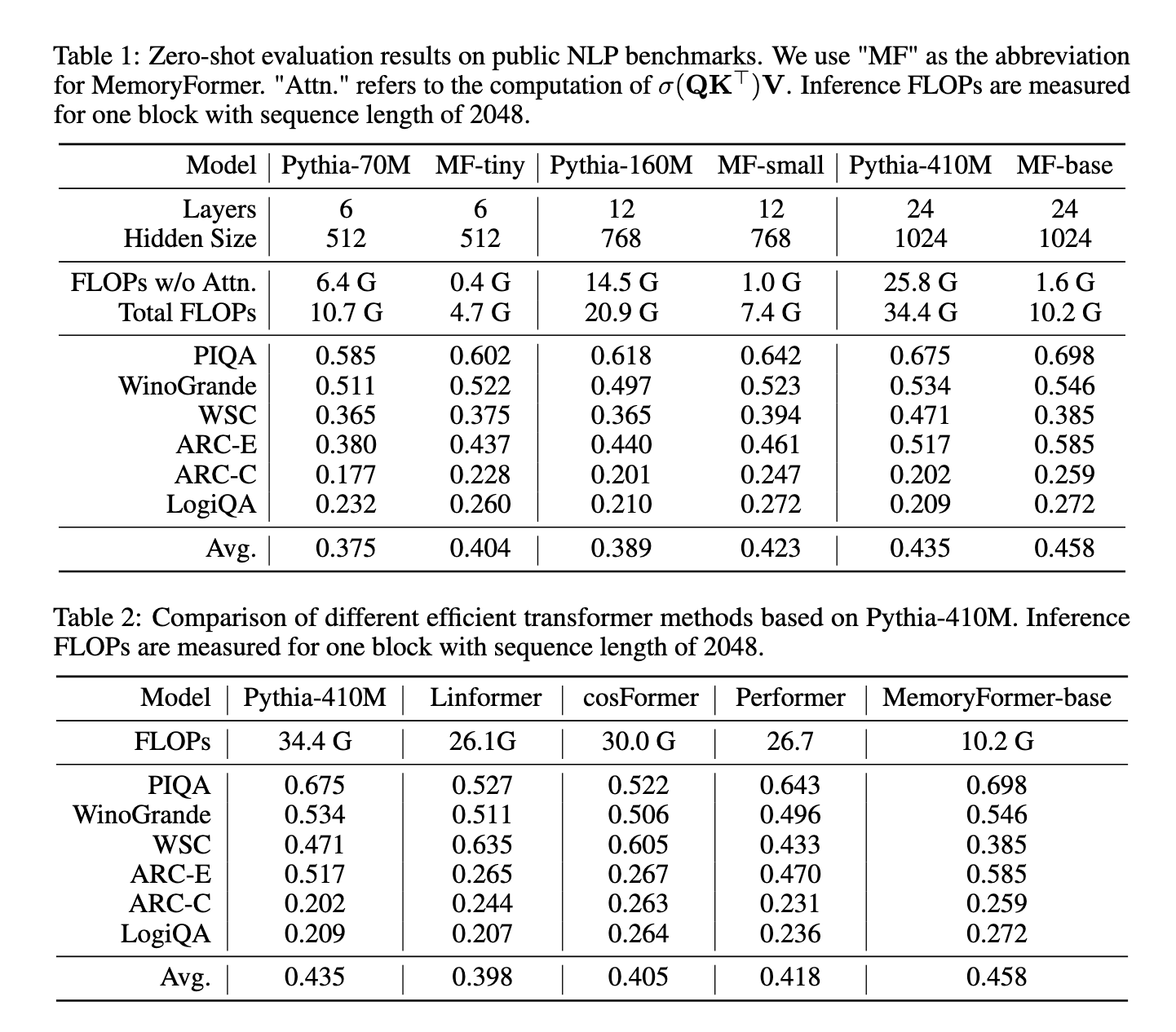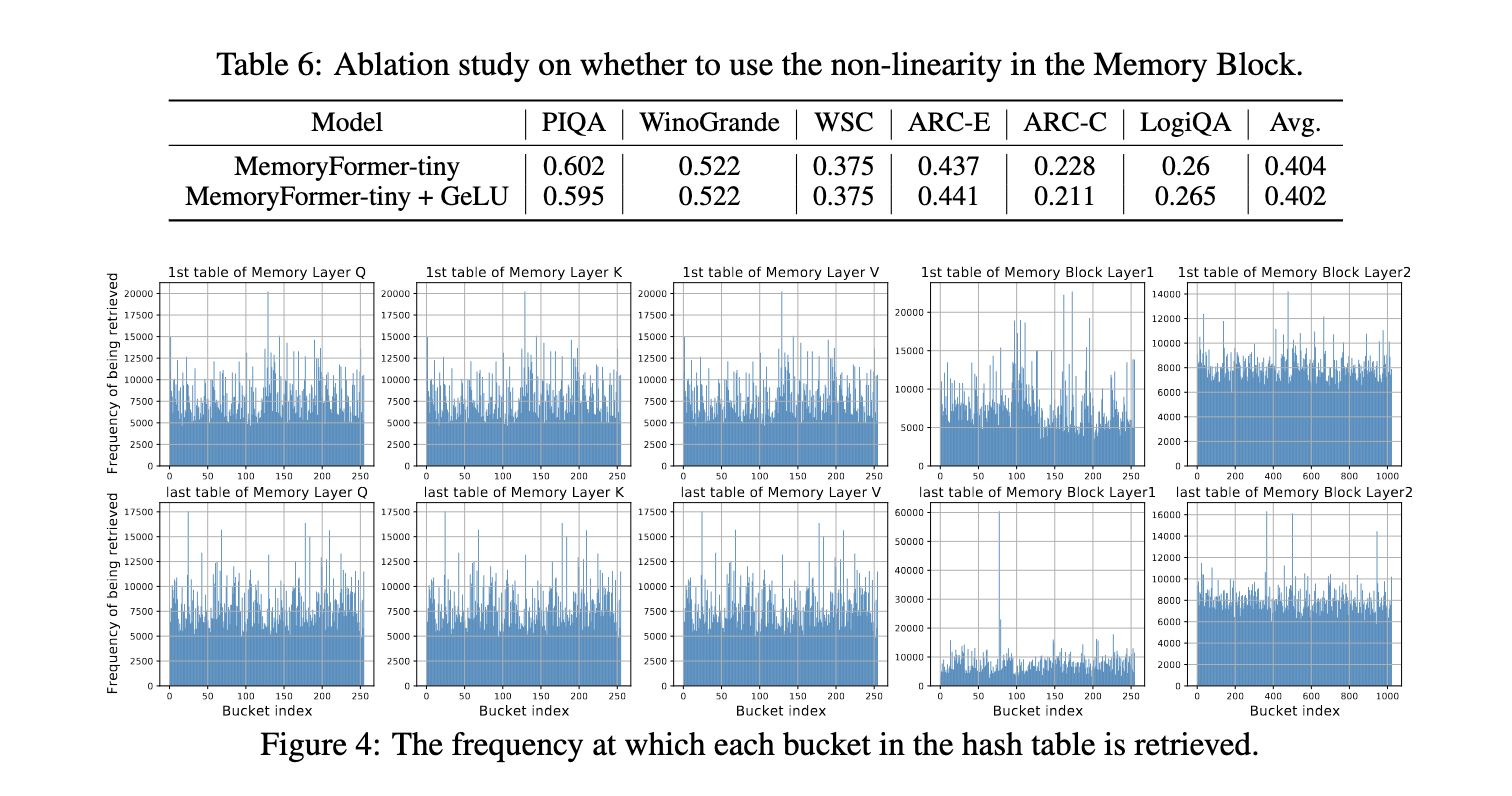Transformer models have driven revolutionary advances in artificial intelligence, driving applications in natural language processing, computer vision, and speech recognition. These models excel at understanding and generating sequential data by leveraging mechanisms such as multi-headed attention to capture relationships within input sequences. The emergence of large language models (LLMs) built on transformers has amplified these capabilities, enabling tasks ranging from complex reasoning to creative content generation.
However, the increasing size and complexity of LLMs comes at the cost of computational efficiency. These models rely heavily on fully connected layers and multi-head attention operations, which require significant resources. In most practical scenarios, fully connected layers dominate the computational load, making it difficult to scale these models without incurring high energy and hardware costs. This inefficiency restricts its accessibility and scalability in broader industries and applications.
Several methods have been proposed to address computational bottlenecks in transformer models. Techniques such as model pruning and weight quantization have moderately improved efficiency by reducing model size and accuracy. The redesign of the self-attention mechanism, such as linear and flash attention, has decreased its computational complexity from quadratic to linear in terms of sequence length. However, these approaches often need to pay more attention to the contribution of fully connected layers, leaving a substantial part of the computation unoptimized.
Researchers from Peking University, Huawei Noah's Ark Laboratory and Huawei HiSilicon introduced MemoryFormer. This transformative architecture eliminates computationally expensive connected layers, replacing them with memory layers. These layers use in-memory lookup tables and locality-sensitive hashing (LSH) algorithms. MemoryFormer aims to transform input embeddings by retrieving precomputed vector representations from memory instead of performing conventional matrix multiplications.
MemoryFormer's main innovation lies in its Memory Layer design. Instead of performing linear projections directly, the input embeddings are processed using a locality-sensitive hashing algorithm. This process maps similar embeddings to the same memory locations, allowing the model to retrieve pre-stored vectors that approximate the results of matrix multiplications. By breaking embeddings into smaller chunks and processing them independently, MemoryFormer reduces memory requirements and computational load. The architecture also incorporates learnable vectors within hash tables, allowing the model to be trained end-to-end using backpropagation. This design ensures that MemoryFormer can handle various tasks while maintaining efficiency.

MemoryFormer demonstrated exceptional performance and efficiency during experiments conducted on multiple NLP benchmarks. For sequence lengths of 2048 tokens, MemoryFormer reduced the computational complexity of fully connected layers by more than an order of magnitude. Computational FLOPs for MemoryFormer were reduced to just 19% of the requirements of a standard transformer block. On specific tasks such as PIQA and ARC-E, MemoryFormer achieved accuracy scores of 0.698 and 0.585, respectively, outperforming basic transformer models. Overall average accuracy across the tasks tested also improved, highlighting the model's ability to maintain or improve performance while significantly reducing computational overhead.
The researchers compared MemoryFormer with existing efficient transformation methods, including Linformer, Performer, and Cosformer. MemoryFormer consistently outperformed these models in terms of computational efficiency and benchmark accuracy. For example, compared to Performer and Linformer, which achieved average accuracies of 0.418 and 0.398, respectively, MemoryFormer achieved 0.458 using fewer resources. These results underline the effectiveness of their memory layer in optimizing transformer architectures.

In conclusion, MemoryFormer addresses the limitations of transformer models by minimizing computational demands through innovative use of memory layers. Researchers demonstrated a transformative approach to balancing performance and efficiency by replacing fully connected layers with memory-efficient operations. This architecture provides a scalable path to deploying large language models across diverse applications, ensuring accessibility and sustainability without compromising accuracy or capability.
Verify he Paper. All credit for this research goes to the researchers of this project. Also, don't forget to follow us on <a target="_blank" href="https://twitter.com/Marktechpost”>twitter and join our Telegram channel and LinkedIn Grabove. If you like our work, you will love our information sheet.. Don't forget to join our SubReddit over 55,000ml.
(FREE VIRTUAL CONFERENCE ON ai) SmallCon: Free Virtual GenAI Conference with Meta, Mistral, Salesforce, Harvey ai and More. Join us on December 11 for this free virtual event to learn what it takes to build big with small models from ai pioneers like Meta, Mistral ai, Salesforce, Harvey ai, Upstage, Nubank, Nvidia, Hugging Face and more.
Nikhil is an internal consultant at Marktechpost. He is pursuing an integrated double degree in Materials at the Indian Institute of technology Kharagpur. Nikhil is an ai/ML enthusiast who is always researching applications in fields like biomaterials and biomedical science. With a strong background in materials science, he is exploring new advances and creating opportunities to contribute.
<script async src="//platform.twitter.com/widgets.js” charset=”utf-8″>






